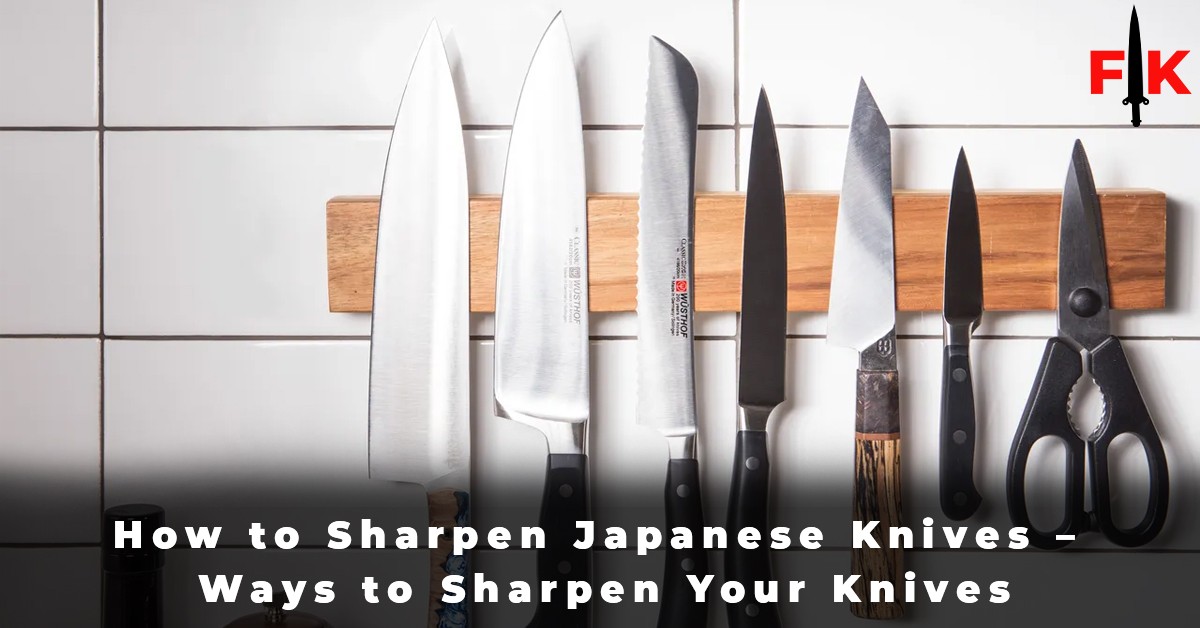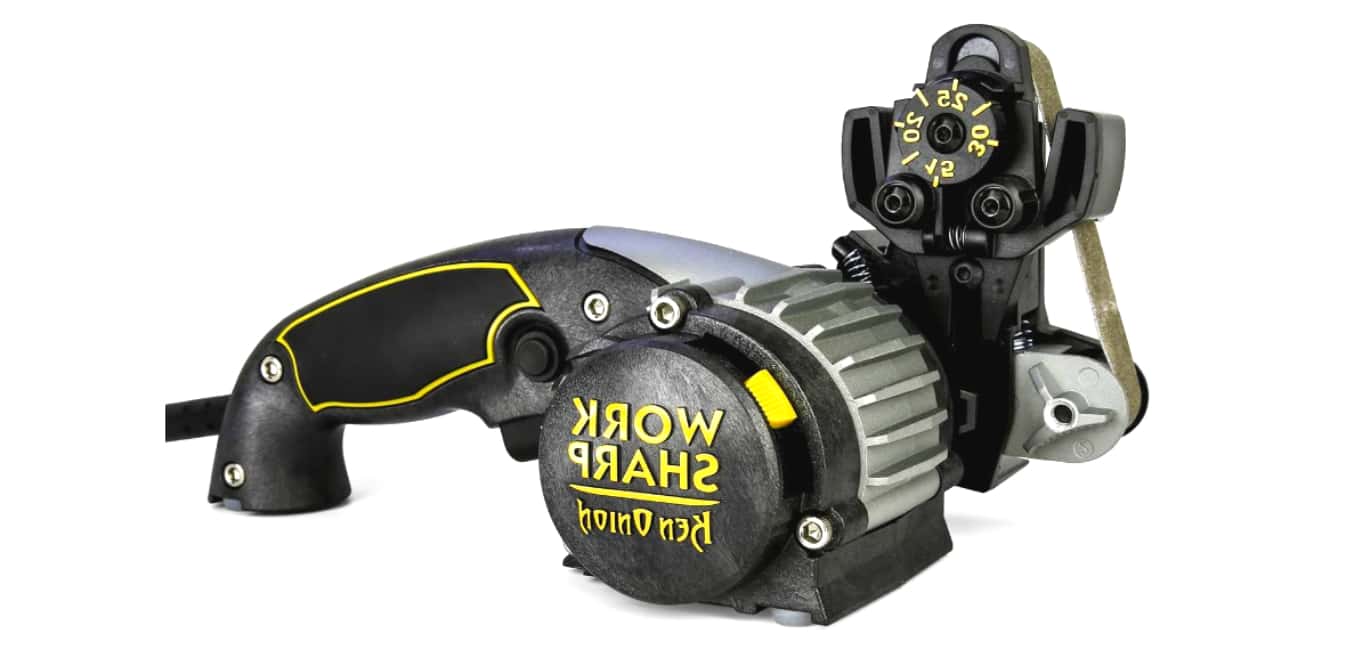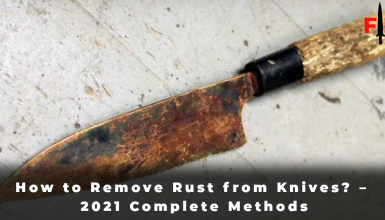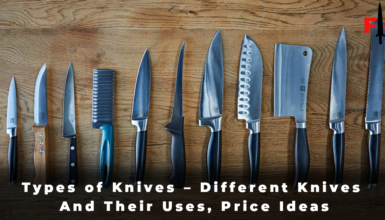Your cuisine will look beautiful and taste better when you have a well-maintained knife that cuts easily. Furthermore, it enhances the taste and makes chopping ingredients safer, because they are cut up exactly as you intend. Hence, to maintain a sharp cutting ability to the end, it’s really important to keep your knives sharpened.
People are often interested to know How long does it take to sharpen a knife? Well, in general, the process of sharpening a knife (when it has become completely dull) with a series of whetstones does take approximately 45 minutes. This should not be necessary very often, however. Once a week, gentle stropping should be sufficient to maintain a sharp edge on a 60+ hardness.
While on the other hand, if you’re fond of sharpening your knives after every week, that’s great. Because, to make your knife as sharp as possible, you should sharpen it while it is relatively sharp. By doing this, you’ll need only 5 to 10 minutes to get your knife ready!
Table of Contents
- How to Sharpen Japanese Knives?
- Best Way to Sharpen a Kitchen Knife
- Best Angle to Sharpen a Knife
- Tools You Can Use for Sharpening Knives
- When Should You Sharpen?
- When to Use a Knife Sharpener?
- Best Knife Sharpening Tools
- Chef’s Choice Trizor XV Edge Select Professional Electric Knife Sharpener
- Smith’s – TRI6 TRI-6 Arkansas TRI-HONE Sharpening Stones
- Work Sharp Knife & Tool Sharpener Ken Onion Edition
- Things to Consider When Sharpening a Knife
- Conclusion
- FAQ’s
How to Sharpen Japanese Knives?
Regular steel honing rods cannot be used on Japanese knives. Our knives are typically made from steel harder than the steel in inexpensive supermarket sharpening rods. As a result, you can risk damaging your knife and it will simply do nothing. Hence, honing rods should only be used for the regular touch-up of the knives’ edges.
Let’s take a look at the important steps you should follow to sharpen the knives.
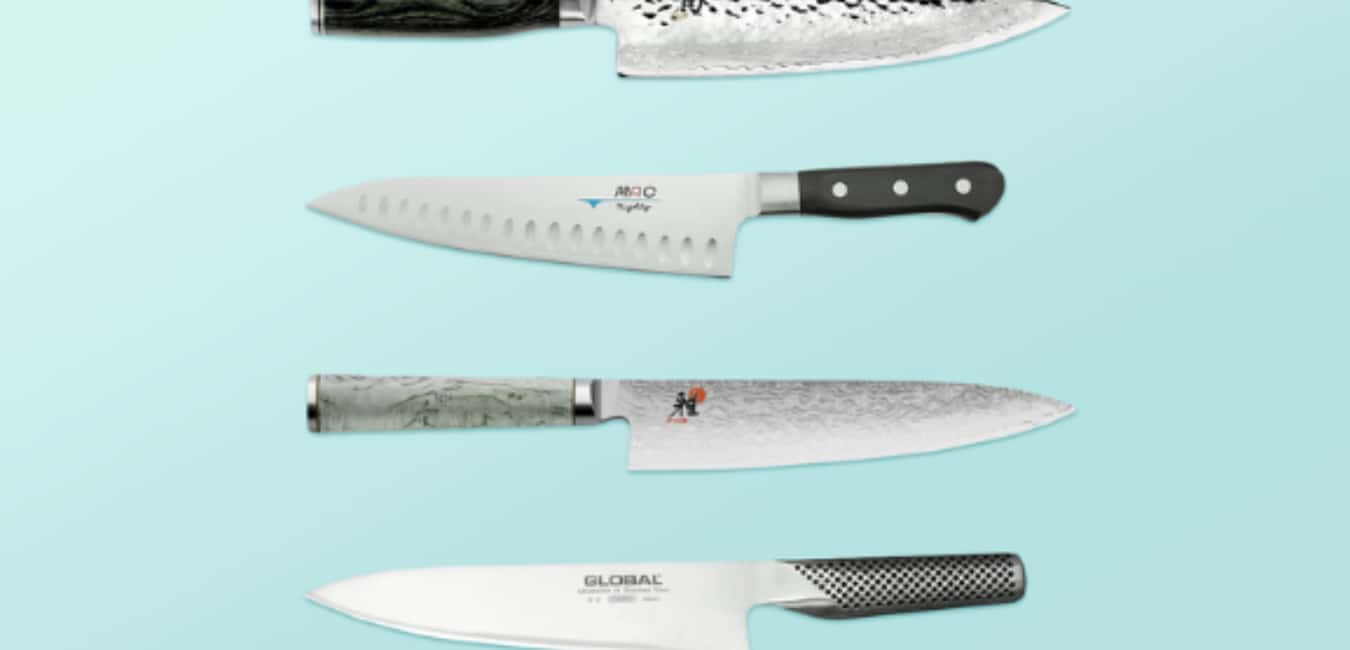
Sharpen the Blade’s Face Side First
On a whetstone, place the edge of the knife. You can sharpen a point by pushing it with your fingers. The angle should be between 10′ and 15′ at all times. Once you’ve chosen the point that needs sharpening, push the point of the blade up with your fingers while maintaining the angle as you stroke the face of the whetstone. Pull the blade back up until it touches the whetstone’s edge.
This back and forth movement is actually one stroke. You got to continue the process for five strokes, for each point of the knife that needs sharpening.
Sharpen the Blade’s Opposite Side
After sharpening the blade’s face side, now you’ll have to do it for the opposite side. Stroke the blade again, starting from one edge of the whetstone, and pulling it back until it reaches the other edge. You have to repeat the process from the tip of the blade to its base in order to obtain maximum sharpness.
Things You Need While Sharpening
Here are a few things you need to make sure you already have by your side before you start sharpening a knife.
- The knife needs to be sharpened, of course.
- Whetstones; a rough one, a medium whetstone, and a finishing whetstone.
- The container in which the whetstones will be immersed. Because a whetstone works best when it’s wet.
- A towel or an extra cloth to prevent the whetstone from moving during the process.
Best Way to Sharpen a Kitchen Knife
To sharpen your kitchen knives, you can simply use a honing rod first and then go for the sharpeners. Remember, do not confuse the honing rods with a sharpener. These are two different things. So, you’ll need them both.
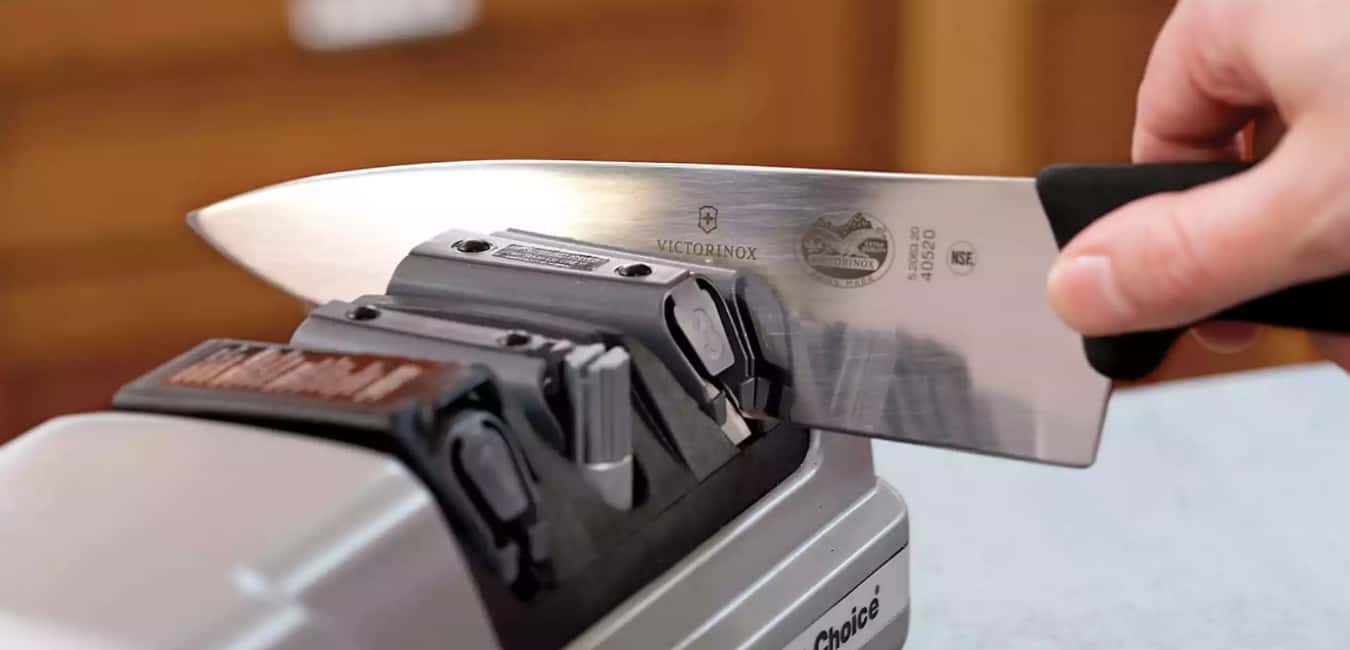
Use a Honing Steel:
Honing steels are used on a daily basis. Your knife runs across the ridges of this metal wand, and it becomes smooth. Honing steel straightens and smoothens out the teeth of your knife when they slam into a hard cutting board while cutting food. The result is that you perceive the knife as sharp.
Start with the knife’s heel touching the rod and end it with its tip. Your arm, hand, and wrist will need to be active. It is especially important to move the wrist towards yourself in order to execute the right action. Sweeping the blade will be impossible without moving the wrist.
Use a Sharpener Then:
The whetstones are the best sharpeners for knives. They are very popular as great tools for sharpening knives since they provide complete control for the cook. You can have them sharpened to the desired intensity. All you need to do is stroke the blade of the knife from one edge of the whetstone and pull it towards the other edge. Repeat 5 to 6 strokes, according to the sharpness you desire.
Best Angle to Sharpen a Knife
Japanese knives should be sharpened at an angle of 10 – 15 degrees on one side only. The blades of most Japanese knives are now double beveled, which means that they need to be sharpened 10 – 15 degrees on the other side too. That’s what is going to make your overall knife sharpened. So, the sharpening angle of a double bevel knife should be between 20 and 30 degrees.

Tools You Can Use for Sharpening Knives
Out of many of them available in the market, we’re going to list here the best Sharpening tools for knives that are safe, effective, and sharp:
- Whetstone or Sharpening Stone
- The sandpapers
- Sharpening Steel
- Serrated Knife Sharpener
- Honing Knives/Rods
- Electric Knife Sharpeners
- Handheld Sharpener
When Should You Sharpen?
It is recommended to sharpen your knives once or twice a week. This is because knives must be sharpened again when they’re already sharp. This would save you time. On the other hand, if you sharpen your knives when they have become completely dull, you’ll require more time and effort to get them perfectly sharpened again.
Depending on how often your knives are used, you can also sharpen them every few months. Having your knives sharpened professionally every 1-2 years is a good idea. So we recommend doing that.
When to Use a Knife Sharpener?
A blunt knife creates a mess when cutting tomatoes and slips while cutting onions. When you observe this, it’s time to sharpen your knife. No matter what sharpener you use, whether it’s a manual sharpener, an electric sharpener, or a whetstone, knife sharpening is an essential thing for an ideal cutting and chopping.
It is recommended to sharpen your knives every few days or after a month before it gets too dull. It is always better to be time!
Best Knife Sharpening Tools
For our customers’ convenience, we have shortlisted the most effective and handy tools for knife sharpening. These are definitely the ones you won’t regret buying.
Chef’s Choice Trizor XV Edge Select Professional Electric Knife Sharpener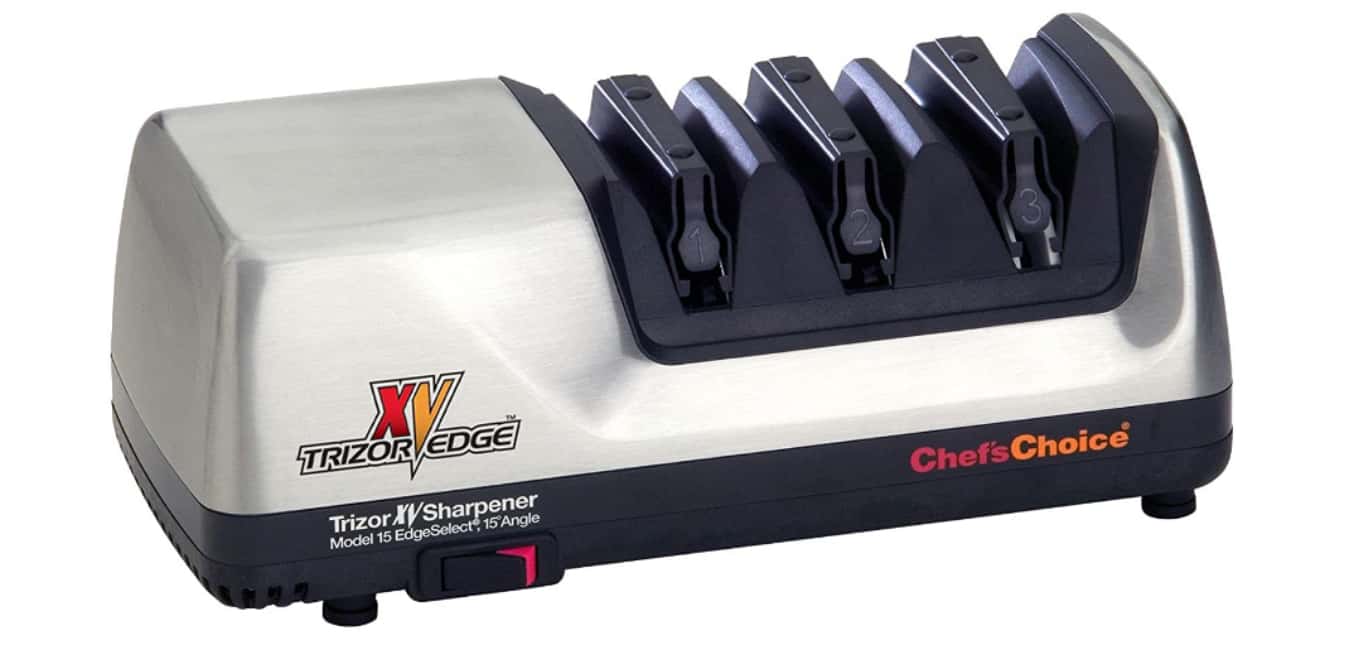
About – Diamond-abrasive sharpening tools from Chef’s Choice have become the leading brands. The Trizor XV Edge Select Sharpener is Chef’s Choice’s latest innovation, which is now available for both professional and home use. The three-stage electric sharpener will maintain the sharpness of your knives at their most efficient.
Qualities
- Diamond-coated disks effectively set and hone the cutting edges of straight-edge blades or serrated blades, leading to superior precision and durability.
- The triple-beveled edge of Chef’s Choice gives it strength, durability, and sharpness; all in one.
- For precise control, angled slots hold knives in place using patented springs.
- The Trizor XV sharpens knives to a 15° angle in just a few seconds, making it the ideal solution for converting traditional knives to a 15° angle.
Specifications
- Width: 25.4 cm
- Depth: 10.80 cm
Smith’s – TRI6 TRI-6 Arkansas TRI-HONE Sharpening Stones
About – There are three types of Arkansas stones utilized by Smith’s TRI-6 system; a medium stone for sharpening, a fine stone for honing, and a third coarse synthetic stone for more aggressive maintenance. The plastic base with plastic feet is nonskid and has a “V” trough to catch oil drippings.
Qualities
- It contains three different types of stones, ensuring knives get a total sharpening. It contains two Arkansas stones in both medium and fine grades. The third stone is a coarse synthetic stone.
- For added safety, the knife sharpener has molded plastic feet. This will allow you to maintain full control of your knife.
- For a longer lifespan and greater performance, it comes with a premium sharpening solution. A special “V” plate is used to catch the solution.
- With the Smith’s TRI-6 Arkansas TRI-HONE sharpener, those who are accustomed to whetstone sharpening face no problems using this. A sharpening angle guide is also included with the system.
Specifications
- Width: 5 inches
- Depth: 5 inches
Work Sharp Knife & Tool Sharpener Ken Onion Edition
About – Using Work Sharp’s engineering and industrial design, Ken Onion has created a sharpening system that is fast, easy, and repeatable. When it comes to keeping your edges sharp, this is a must-have tool. Knife sharpeners don’t get any better than this.
Qualities
- It can handle all sharpening tasks, from grinding to honing, with its variable-speed motor. More power, improved cooling, and the ability to grind at slow speeds or at high speeds.
- Strong, long-lasting convex edges can be achieved by using flexible abrasive belts.
- No setup, no calibration, just fast, accurate and repeatable sharpening.
- Achieves precise edge levels between 15 and 30 degrees.
Specifications
- Length: 10 inches
- Width: 5.5 inches
- Depth: 6 inches
Things to Consider When Sharpening a Knife
- You should always sharpen your knife on both sides, no matter what method you use.
- Additionally, if your blade is up to 6 inches long, hold it at an angle of 10 degrees.
- For longer blades, 15 to 20 degrees against the surface will result in a perfectly honed blade.
- If you use oil stones, you have to grease them before you can use them. This can make the process a little messy though.
- In case you’re using Whetstones, it is necessary to soak them in water before using them. When used correctly, they deliver an ultra-sharp blade.
- If you consider using the Diamond stones, they can be used dry, are very durable, and are extremely long-lasting. However, they are generally more expensive.
Conclusion
Hence, concluding that it is very important to sharpen your knives according to their requirements. You can use different tools to sharpen them, out of which the Whetstones and the Electrical Sharpeners are the two best options.
We hope that we have been helpful to you regarding the important things about Sharpening the Japanese Knives.
FAQ’s

